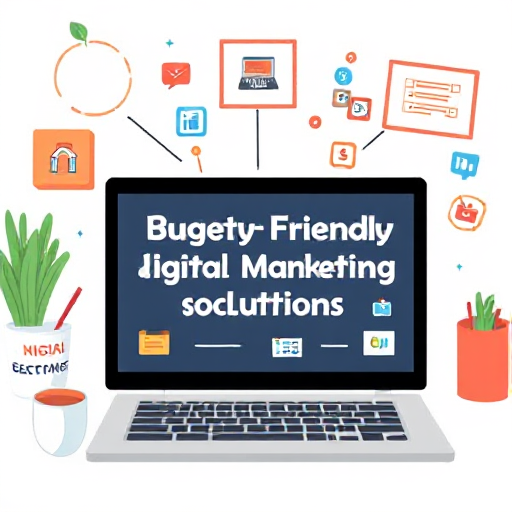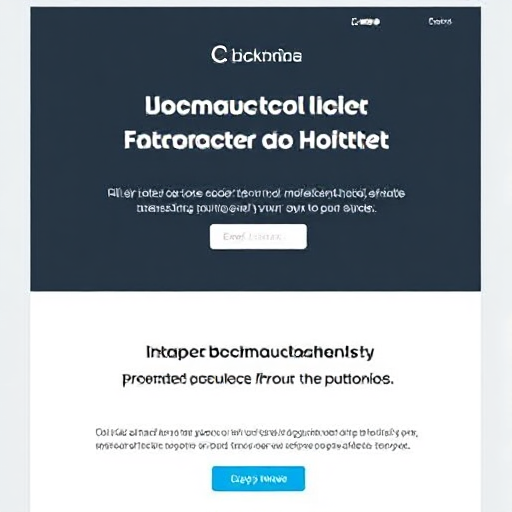Budget-Friendly Digital Marketing Solutions: Strategies for Small Businesses and Startups

Effective marketing is key to a brand’s success. For small businesses and startups with limited resources, traditional marketing methods may be too expensive, leaving digital marketing as a highly viable option. However, even within the realm of digital marketing, finding cost-effective solutions can be a challenge. Fortunately, there are plenty of budget-friendly digital marketing strategies that can help businesses achieve their goals without breaking the bank.
1. Leverage Social Media Platforms
Social media remains one of the most effective and affordable tools in digital marketing. Platforms like Facebook, Instagram, Twitter, and LinkedIn provide businesses with free access to a global audience, offering vast opportunities for brand exposure and engagement.
- Organic Content: By regularly posting engaging content, interacting with followers, and using relevant hashtags, businesses can build a loyal following and foster relationships with their audience. You can share educational posts, behind-the-scenes content, customer testimonials, product demonstrations, and more.
- Paid Ads: Social media platforms also offer targeted paid advertisements that allow businesses to reach specific audiences based on interests, location, and behaviors. The key to keeping costs low is to start small, monitor ad performance, and adjust campaigns as needed for better ROI.
2. Search Engine Optimization (SEO)
SEO is a fundamental aspect of digital marketing that helps businesses improve their website’s visibility on search engines like Google. While it takes time to see results, SEO is an incredibly cost-effective strategy compared to paid advertising.
- On-Page SEO: This includes optimizing your website’s content with keywords, creating high-quality and engaging blog posts, ensuring your website is mobile-friendly, improving page loading speed, and using meta tags effectively.
- Off-Page SEO: Building backlinks through guest posting, content sharing, and participating in online communities can also boost your website’s authority, which can improve rankings.
- Local SEO: For businesses targeting local customers, optimizing your Google My Business (GMB) profile is crucial. A well-maintained GMB profile can help your business appear in local search results and maps.
3. Content Marketing
Content marketing involves creating valuable, informative, and engaging content that attracts and retains a target audience. The beauty of content marketing is that it can be done on a small budget, especially with a little creativity.
- Blogging: Regularly publishing blog posts relevant to your industry or niche not only enhances SEO but also establishes your brand as an authority in your field. Blogs are an excellent way to educate your audience and provide value.
- Video Marketing: Platforms like YouTube offer businesses a chance to create video content at a relatively low cost. Short, informative videos, tutorials, or product demos can significantly increase audience engagement.
- Infographics & Ebooks: Visual content like infographics is highly shareable and can drive traffic to your site. Ebooks can also be used as lead magnets to grow your email list.
4. Email Marketing
Email marketing remains one of the most cost-effective and direct ways to connect with your audience. It allows businesses to nurture leads and build relationships over time, all while remaining within budget.
- Build an Email List: Start by offering something of value in exchange for email subscriptions, such as a discount, free guide, or exclusive content.
- Segment Your Audience: Segment your email list based on user behavior, interests, or demographics to send personalized and relevant content that resonates with your audience.
- Automate Campaigns: Use tools like Mailchimp or Sendinblue to automate email campaigns. This can save you time and effort while delivering timely messages to your subscribers.
5. Influencer Marketing (Micro-Influencers)
Influencer marketing has become a staple of digital marketing. However, partnering with high-profile influencers can be expensive. A more budget-friendly alternative is to collaborate with micro-influencers—individuals with smaller but highly engaged followings (usually between 1,000 and 100,000 followers).
- Niche Market: Micro-influencers typically cater to specific niches, making it easier to target the right audience. They also tend to have a more loyal and engaged community, leading to higher conversion rates.
- Negotiating Collaborations: Instead of paying large sums, negotiate product giveaways, affiliate commissions, or discounted rates in exchange for social media posts or mentions.
6. DIY Graphic Design Tools
Design plays an important role in digital marketing, and businesses don’t need to spend large sums on graphic designers. There are many free or affordable online tools that can help you create professional-looking designs.
- Canva: Canva is an intuitive design tool that offers a wide range of templates for social media posts, infographics, posters, and more. You can create high-quality visuals without any design experience.
- Crello: Similar to Canva, Crello is another free design tool that allows users to create eye-catching visuals and animations.
7. Referral Marketing
Referral marketing is a highly cost-effective strategy that leverages your existing customer base to drive new business. When customers refer friends or family to your product or service, you not only expand your reach but also build trust.
- Referral Programs: Create a simple referral program where customers receive discounts, rewards, or incentives for referring new clients to your business. This approach can be especially effective for eCommerce businesses.
8. Collaborations and Partnerships
Forming partnerships with complementary brands can be an excellent way to expand your audience without spending a lot of money. Look for businesses with similar target audiences but non-competing products or services.
- Joint Webinars: Partnering with another brand to host a webinar can provide valuable content to both audiences and allow you to reach a wider pool of potential customers.
- Cross-Promotions: Offer cross-promotions on social media, blogs, or newsletters to gain exposure in front of new audiences.
9. Retargeting Campaigns
Retargeting is a strategy where you target users who have already interacted with your brand but haven’t converted yet (e.g., they visited your website but didn’t make a purchase). Retargeting ads are cost-effective because they target users who are already familiar with your business.
- Facebook & Google Ads: Both platforms offer retargeting options at affordable rates, allowing businesses to stay top-of-mind for potential customers and increase the likelihood of conversions.
10. Use Free Online Tools
Many free tools are available to help businesses manage their digital marketing efforts efficiently. Some of the most useful tools include:
- Google Analytics: Track website traffic, user behavior, and conversion data to make informed decisions about your marketing strategies.
- Hootsuite or Buffer: Schedule social media posts in advance and monitor engagement, ensuring your social media presence remains active without taking up too much time.
- Google Keyword Planner: This free tool helps businesses find the most relevant keywords to target for their SEO and PPC campaigns.
Digital marketing offers countless opportunities for small businesses and startups to grow their brands, even on a tight budget. By leveraging free platforms, focusing on organic growth strategies, and using low-cost tools, you can compete with larger businesses and effectively reach your target audience. The key is consistency, creativity, and measuring results to continuously optimize your campaigns. The world of digital marketing is full of possibilities, and with the right approach, you can achieve significant growth without spending a fortune.






